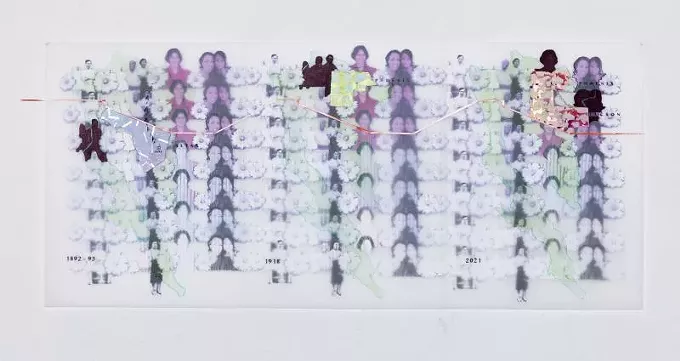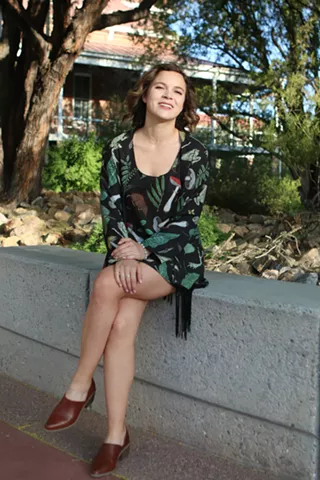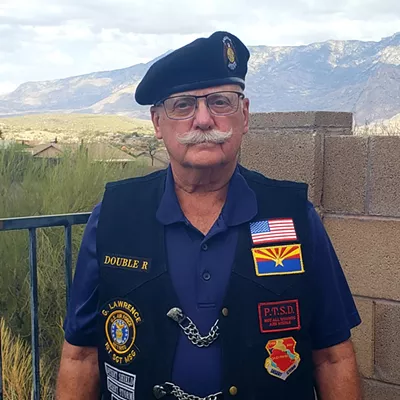
An archive in the University of Arizona Library Special Collections holds the PandemiDiarios, a collection of artifacts created by people from across Southern Arizona who endured the last three years of the COVID-19 pandemic.
The UA’s Confluencenter for Creative Inquiry gave a total of $16,000 in artistic mini-grants to 35 artists, Tucsonans and people from across the borderlands. A single mini-grant was $500 and gave the awardee an opportunity to tell their experience of living through the pandemic.
“In the first competition, there was a lot of hope expressed for the projects. In the second competition, we decided to focus on the border region,” said Dr. Javier Duran, director of the Confluencenter and professor of Latin American & Border Studies.
The project was split into two cohorts. The first cohort competition took place in 2020 with a focus on students, academic professionals and community-based artists.
Submissions for both competitions came in diverse formats that included virtual dance pieces, calligraphy, photography, mixed media and more. The pieces are interpretive diary entries, as the project name would suggest. Each submission was a personal recount of a moment in time, a moment in which many of the artists experienced alone.
Peaceful blessings
Dr. Jinhui Wu, an artist from the first competition, incorporated her culture into the project. Wu graduated from the UA with a doctorate in East Asian studies.
“Part of my research was suspended because I was not able to return to China,” Wu wrote in an email to the Weekly. “I could not visit my parents or friends.”
Wu stayed home like many of us because of the pandemic, but also due to racism.
“I had people shout at me with curse words against Asians,” Wu said. “It was a very depressing period of time.”
Unfortunately, Wu’s experience is not isolated. The Federal Bureau of Investigation found that anti-Asian incidents increased by 77% from 2019 to 2020.
While in the safety of her home, Wu said she meditated, gardened and practiced calligraphy.
“My work ‘Medicine Buddha Mantra in Calligraphy’ is a creative artwork that reflects my everyday life during the crisis,” Wu said.
The Medicine Buddha Mantra is a popular mantra in East Asia, according to Wu. Buddhists chant this mantra to ask for assistance from the Medicine Buddha on behalf of their sick family member or to purify their karma.
Wu said she scripted the mantra on fine paper with traditional Chinese brush pens. The combination of the characters portrays a wooden fish, a percussion tool used during Buddhist rituals. She then took the project a step further by incorporating a desert plant into her ink.
“I added drops of cactus from my garden in the hopes of enhancing the magic power of the mantra to heal the Tucson locals,” Wu said.
Wu said she hoped sharing this art with the Confluencenter and the public would bring attention to East Asian art while also contradicting the racism she experienced during the pandemic.
“I wish to show my disapproval of those actions taken against Asians during the pandemic by a very opposite action of peaceful blessings,” Wu said.
Borderlands
The second phase of the PandemiDiarios competition focused on people’s connection to the U.S.-Mexico border. Sara Hubbs submitted her mixed-media project “Pandemic Mother Map” after seeing her friends participate in the first round on Instagram.
“I just had, because of COVID, such a personal connection and desire and almost like a need to make the work,” Hubbs said. Hubbs normally does glass work when it comes to her chosen art medium, but this project took her outside her comfort zone.
Hubbs’ work is an abstract visual timeline of generations of mothers from her family that endured pandemics during their lifetimes.
“All of the migration and experience of pandemic that happened within my family all happened within the Sonoran Desert,” Hubbs said.
For the base of her art map, she photocopied a multitude of images of her family and herself over and over until the ink began to fade in some areas. She said this technique reminded her of the fading of family memories as the generations progressed. There is also a shape in the background of the Sonoran Desert, reminding the audience of where the timeline is geographically located.
On the left side of the map, Hubbs depicted her great-great-grandmother and great-grandfather. From 1892 to 1893, Hubbs’ great-great-grandmother emigrated from Sonora to Phoenix after losing her husband and a son to smallpox. Hubbs said she’s not 100% certain if it was from smallpox or the “Russian Flu.” From 1889 to 1894, records indicate a disease called the “Russian Flu” was widely reported and killed an estimated one million people worldwide at the time, according to a study by Professor Emeritus Patrick Berche from the University of Paris.
Either way, the timeline of Hubbs’s project begins after her great-great-grandmother immigrated to Phoenix.
In the next panel, Hubbs depicts her family members that lived together in Phoenix during the 1918 flu pandemic. Hubbs’ great-great-grandmother, great-grandfather, and grandmother all lived in the same household during the “Spanish Flu”.
The 1918 flu pandemic is considered to be the deadliest strain of influenza in history. According to the Centers for Disease Control and Prevention, the strain killed approximately 50 million people worldwide. It is estimated to have killed more or equal to the number of World War I casualties, depending on the source. It was labeled the “Spanish Flu” because the story first broke headlines in Madrid news media. However, the 1918 flu did not originate from Spain.
Hubbs said going back into her family history helped her understand how to deal with the current pandemic.
“The way that you find strength is you look to these other stories and you find it in the people that have come before because you’ve come from a long line of people who have weathered these things in order for you to be here,” Hubbs said.
Hubbs found comfort in looking to her ancestors for guidance during her own pandemic. Hubbs’ mother was sick at the beginning of the pandemic in 2019. Hubbs said she prayed for her mother and envisioned talking to her grandmother.
“I was thinking about pandemics and I’m thinking about all of the things that she had been through and she was such a big role model in my life, and she was just so strong,” Hubbs said.
Hubbs’ mother survived and she wanted to commemorate her mother and the mothers before her through the PandemiDiarios project.
To reinforce the symbolism of motherhood, Hubbs inserted pictures of saguaro blossoms into the tapestry of images. Saguaro’s take many years to grow and the blossoms usually grow under a nurse plant. She said mothers are like those nurse plants, helping the young bud grow. Hubbs said she also wanted to incorporate the blossoms to remind herself of the old saguaros who have probably watched her family evolve over the past 130 years in the Sonoran Desert.
“I think we kind of felt adrift in this pandemic experience and it felt really good to feel that there was continuity with something, with people, with a place,” Hubbs said.







